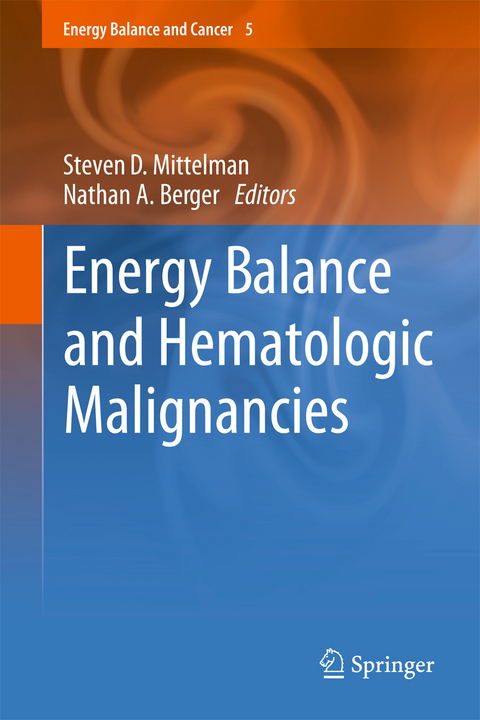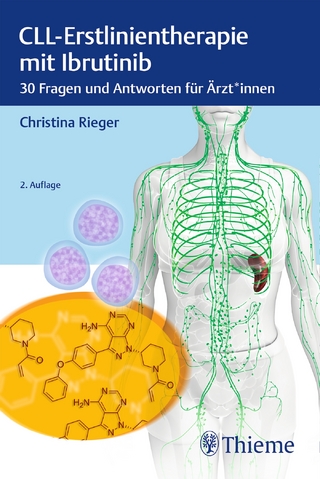
Energy Balance and Hematologic Malignancies
Seiten
2014
Springer-Verlag New York Inc.
978-1-4899-9421-9 (ISBN)
Springer-Verlag New York Inc.
978-1-4899-9421-9 (ISBN)
The obesity pandemic continues to increase on a world-wide basis with over 70% of the United States population being either overweight or obese. Another important aspect of the association of obesity with hematologic malignancies is the increased incidence of obesity in children who successfully complete therapy for acute lymphoblastic leukemia.
The obesity pandemic continues to increase on a world-wide basis with over 70% of the United States population being either overweight or obese. Hematologic malignancies have recently been identified among the obesity associated malignancies spanning the lifespan from childhood to the elderly and include leukemia, myeloma, lymphoma and others. In addition to the etiologic association between obesity and hematologic malignancies, the presence of obesity has profound effects on therapy by impacting pharmacokinetics of chemotherapeutic agents, dose, adipocyte metabolism and drug distribution. These may be particularly important in hematopoietic stem cell transplantation. Another important aspect of the association of obesity with hematologic malignancies is the increased incidence of obesity in children who successfully complete therapy for acute lymphoblastic leukemia. This and other observations indicate important relations between the hematopoietic systems and fat metabolism. This volume on Energy Balance in Hematologic Malignancies will provide an important volume in this series and a basis for better understanding etiology, mechanisms, therapeutics implications and experimental approaches. This volume of energy balance and cancer will focus on the relation of obesity to hematologic malignancies, the epidemiology, potential mechanisms, and thereapeutic considerations including effects on pharmacologic and physical approaches as well as the delayed effects of therapy on energy balance.
The obesity pandemic continues to increase on a world-wide basis with over 70% of the United States population being either overweight or obese. Hematologic malignancies have recently been identified among the obesity associated malignancies spanning the lifespan from childhood to the elderly and include leukemia, myeloma, lymphoma and others. In addition to the etiologic association between obesity and hematologic malignancies, the presence of obesity has profound effects on therapy by impacting pharmacokinetics of chemotherapeutic agents, dose, adipocyte metabolism and drug distribution. These may be particularly important in hematopoietic stem cell transplantation. Another important aspect of the association of obesity with hematologic malignancies is the increased incidence of obesity in children who successfully complete therapy for acute lymphoblastic leukemia. This and other observations indicate important relations between the hematopoietic systems and fat metabolism. This volume on Energy Balance in Hematologic Malignancies will provide an important volume in this series and a basis for better understanding etiology, mechanisms, therapeutics implications and experimental approaches. This volume of energy balance and cancer will focus on the relation of obesity to hematologic malignancies, the epidemiology, potential mechanisms, and thereapeutic considerations including effects on pharmacologic and physical approaches as well as the delayed effects of therapy on energy balance.
Preface.- The Epidemiology of Obesity and Hematologic Malignancies.- Adipocytes, Lipid Metabolism and Hematopoiesis.- Mechanisms Linking Obesity and Leukemia Prognosis.- Obesity and Multiple Myeloma.- The Impact of Obesity on Pharmacokinetics and Dosing of Leukemia Chemotherapy.- The Impact of Obesity on Stem Cell Transplant.- Obesity Following Childhood Leukemia: Mechanisms and Consequences.- Physical Activity and Recovery from Hematological Malignancy.- Index.
| Erscheint lt. Verlag | 13.4.2014 |
|---|---|
| Reihe/Serie | Energy Balance and Cancer ; 5 |
| Zusatzinfo | X, 186 p. |
| Verlagsort | New York |
| Sprache | englisch |
| Maße | 155 x 235 mm |
| Themenwelt | Medizin / Pharmazie ► Medizinische Fachgebiete ► Onkologie |
| Medizin / Pharmazie ► Medizinische Fachgebiete ► Pharmakologie / Pharmakotherapie | |
| Medizin / Pharmazie ► Pharmazie | |
| ISBN-10 | 1-4899-9421-1 / 1489994211 |
| ISBN-13 | 978-1-4899-9421-9 / 9781489994219 |
| Zustand | Neuware |
| Informationen gemäß Produktsicherheitsverordnung (GPSR) | |
| Haben Sie eine Frage zum Produkt? |
Mehr entdecken
aus dem Bereich
aus dem Bereich
Korrigierter Nachdruck 2020 mit allen Ergänzungen der UICC aus den …
Buch | Softcover (2020)
Wiley-VCH (Verlag)
CHF 59,95
30 Fragen und Antworten für Ärzt*innen
Buch | Softcover (2023)
Thieme (Verlag)
CHF 6,95


